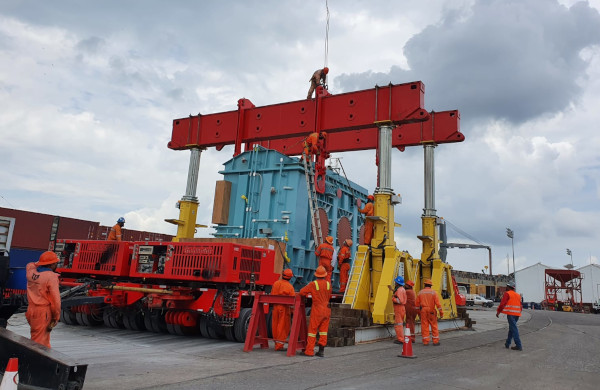Rafael de los Santos Makes the Case for Mexico’s Nearshoring Edge
_1.png)
By Rafael de los Santos Diaz
On April 2, President Donald Trump unveiled sweeping new tariffs aimed at addressing persistent U.S. trade deficits, imposing a baseline 10% tariff on all imports and escalating duties as high as 50% for more than 100 countries deemed to engage in unfair trade practices. China faced a significant 34% tariff, Vietnam 46%, and the European Union 20%.
Then, on April 9, the Trump Administration announced a 90-day pause on the tariffs. A flat 10% rate was applied to all countries except China, which was hit with a significantly higher tariff of 145% on its products.
The “big surprise” on April 2 was that Mexico and Canada were exempted from additional tariffs. Then, on April 9, they were spared again – this time from the 10% flat rate. There is obviously a rationale behind this exception: Mexico and Canada are part of the trilateral trade agreement, known as the USMCA, signed by President Trump in 2018. This replaced NAFTA.
It is not that Mexico and Canada do not face their own problems with tariffs set a few weeks ago by the U.S. administration: 25% on aluminum, steel and vehicles imported into the U.S. However, relatively speaking, they are in much better condition compared with any other country listed on the “reciprocal tariff” list – especially when compared to China.
But the high tariff on goods imported from China creates a major opportunity for Mexico and Canada. Almost overnight, they gained a cost advantage of nearly 125% compared to China!
What to do with such an economic advantage? The answer is quite clear: “Move manufacturing from Asia to North America, fast.”
Mexico's Competitive Edge
 Moving manufacturing to the U.S. is the intended result of these tariffs. However, there is a problem. With an unemployment rate of 4.1%, one of the lowest in 55 years, and a restrictive immigration policy, where will the U.S. find the skilled workers that this massive measure will require? If the U.S. cannot handle all the reshoring, what are its options?
Moving manufacturing to the U.S. is the intended result of these tariffs. However, there is a problem. With an unemployment rate of 4.1%, one of the lowest in 55 years, and a restrictive immigration policy, where will the U.S. find the skilled workers that this massive measure will require? If the U.S. cannot handle all the reshoring, what are its options?
We have to look at its neighbors to the north and south. Where to start? Mexico? Canada? Every American company that wants to avoid sky-high tariffs will need to do their own analysis to determine if such a move makes sense.
As a third-generation Mexican businessperson with experience living in Canada, the U.S. and Mexico, and doing work with world-class companies throughout North America, I can make the case for Mexico. Our country’s biggest assets are location, manufacturing expertise (developed under NAFTA), and low labor costs. Its major challenges are energy supply, rule of law and crime. Each of them could be described in extensive separate analysis, but let me concentrate on energy supply.
The power generation capacity in Mexico reached 91 gigawatts (GW) by the end of 2023, marking a steady increase from previous years. The Federal Electricity Commission (CFE) has unveiled an ambitious plan to add 22.7 GW of capacity by 2030, including projects in wind, solar, and natural gas combined cycle plants. This represents a significant investment of US$22.3 billion aimed at ensuring reliable and sustainable energy supply for industrial and residential growth.
Mexico’s growing energy capacity is critical for supporting its expanding manufacturing sector, particularly as nearshoring trends drive increased foreign investment in industries such as automotive, aerospace and electronics. For example, the state of Querétaro is strengthening its energy transmission infrastructure to meet rising industrial demand, underscoring the direct link between energy development and economic growth.
What does this mean to all of us in the breakbulk industry? We are about to see what I would call “Nearshoring 2.0.” This time the “wave” will be bigger, and I believe Mexico is better set to make the most of this new opportunity.
If you are thinking about minimizing tariffs, and growing your team to “Move North America”, let me give you one simple recommendation: Start learning Spanish. Or, even better, “Mexican.”
Rafael de los Santos Diaz has more than 20 years of experience in leading operations and commercial positions in the transportation, logistics and home appliance industries in the North America region. In charge of strategy, governance, performance, revenue, compliance, business development and commercialization, P&L, and risk mitigation. He can be reached at [email protected].
Top photo: Rafael de los Santos Diaz
Second: Logistics Plus transports a 296-tonne transformer at Mexico's Port of Tampico
